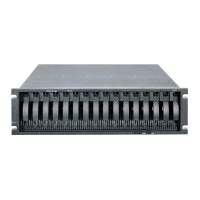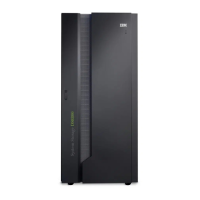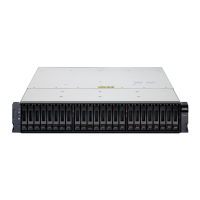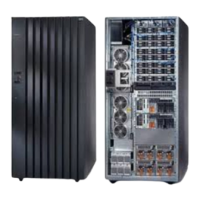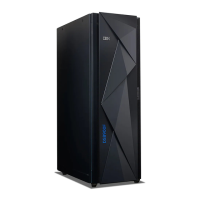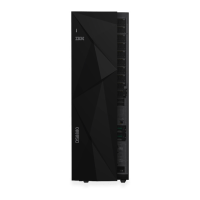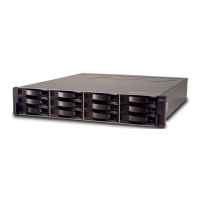9. After you perform the necessary maintenance procedures, turn on the power
using the procedure in “Turning on the storage subsystem” on page 131.
Restoring power after an unexpected shutdown
The storage subsystem might shut down unexpectedly under any of the following
conditions:
Attention: There might be a loss of access to data in each of the following cases.
v The internal temperature of the storage subsystem exceeds the maximum
operating temperature (an over-temperature condition).
If both power supply and fan units fail or are unable to maintain an internal
temperature below 70° C (158° F), one or both of the power supplies in the
storage subsystem will shut down. If both power supply and fan units shut down,
the unit is inoperable.
The DS Storage Manager client warns you if the temperature of the unit is rising
before it has risen sufficiently to shut down the power supplies. The first warning
comes when the storage subsystem internal temperature exceeds 45° C (113°
F). The storage subsystem shuts down if the temperature rises to 70° C (158° F).
v In the DS5100 and DS5300, the right power supply and fan unit is linked to
controller A, and the left power supply and fan unit is linked to controller B. If one
power supply and fan unit has shut down and the controller that is linked to the
other power supply and fan unit is removed, the DS5100 and DS5300 is
inoperable. To increase protection against power loss, always make sure that
both power supply and fan units are plugged in and are operational.
v There is a general power failure or a loss of power to the unit.
v You are forced to shut down the storage subsystem without performing the
normal shutdown procedures (listed in “Turning off the storage subsystem” on
page 133) because of an emergency situation.
Attention: To avoid damage to the hardware, take special care when you restart
the system after an unexpected shutdown.
Note: Unattended restoration of power is supported; however, if power restoration
is attended, you should follow the best practices guidelines and the power
restoration sequence in “Turning on the storage subsystem” on page 131.
Performing an emergency shutdown
Emergency situations might include fire, flood, extreme weather conditions, or other
hazardous circumstances. If a power outage or emergency situation occurs, always
turn off all power switches on all computing equipment. This will help safeguard
your equipment from potential damage due to electrical surges when power is
restored. If the storage subsystem loses power unexpectedly, it might be due to a
hardware failure in the power system or midplane (see Chapter 6, “Hardware
maintenance,” on page 201).
Use the following procedure to shut down the storage subsystem during an
emergency:
1. If you have time, stop all I/O activity to the storage subsystem by shutting down
the host or disconnecting the storage subsystem logical drives through the host.
2. Check the LEDs (front and back). Make note of any Needs Attention LEDs that
are on so you can correct the problem when you turn on the power again.
136 IBM System Storage DS5100 and DS5300 Storage Subsystem: Installation, User’s, and Maintenance Guide

